Adenium is a sun-lover
The desert rose flowering plant grows well in desert settings and will bloom beautifully with full, bright sun. They can also do well with bright morning sun or bright afternoon sun but may not flower as heavy. If kept in the shade, these plants become leggy and weak-stemmed.
Even though bright sun stimulates blossom production, the Desert Rose takes a break during the very hottest and rainiest months of the growing season. This results in two periods of blooming. You’ll see flowers begin to develop in early spring. With the right amount of light, your plant should bloom steadily until mid-summer.
At this point, blossoming will cease for 6-8 weeks only to resume in the early autumn months. When the weather begins to turn cold (55 degrees Fahrenheit or less on a consistent basis) give your plant a good pruning and bring it in the house.
In a very bright, warm environment such as a greenhouse, Adenium can remain active throughout the winter months. If you bring your plant into your house for the winter, it will probably stay in a semi-dormant state until spring arrives. During this time, just keep it in a warm room with bright, indirect light.
Water moderately in warm weather and sparingly in cool weather
The Desert Rose enjoys a nice, warm rainy season, but when cool weather comes, you’ll need to cut back on watering. Some say it is best to think of your Adenium as a tropical plant in the spring and summer and as a cactus in the autumn and winter.
The most important thing to keep in mind is that the roots must never become waterlogged. During the growing season check the soil every few days in container plants. When the plant is completely dry, water slowly and carefully. Saturate the soil, but do not soak it. The soil should be moist, not wet, and there should be no standing water. Use a well-drained soil and allow the soil mix to dry out thoroughly before watering again.
If you plant directly into the landscape, be certain to position your Adenium on a bit of an incline so the water can drain off after heavy rains. The Desert Rose growing outdoors are amazingly drought tolerant and may not need watering once established. In times of extreme drought water deeply, occasionally with a slow drip for several hours during the coolest part of the day.
Desert Rose fertilizer
During the growing season, it is a good idea to provide a light feeding of a slow-release fertilizer, or a water-soluble liquid fertilizer from time-to-time. In the springtime when the plant is rousing from its winter rest, you can give a diluted feeding once every couple of weeks. During summer, reduce this to once a month. As the weather cools, stop feeding so that the plant can wind down for the winter.
If you bring your Adenium plant indoors for the winter, you may want to give it one weak feeding in mid-winter; however, this is not necessary as the plant is likely in a state of semi-dormancy.
Is regular pruning necessary?
Because these plants can grow quite large, a combination of pruning and under-potting is essential to keep them at a manageable size. A regular pruning schedule will help keep your plant fresh, vigorous and well-groomed.
During the growing season, pinch back or prune unruly growth. Before bringing the plant indoors for winter, prune back excessive growth as this will make the rest period more effective for the plant. Additionally, it will be easier to keep a smaller, more compact plant indoors during the winter months.
Before putting the plant back outdoors for the growing season, a good trimming is a smart idea. Trim off any dead or damaged vegetation. Cut back straggly branches to improve the plant’s shape. You can use these branches as cuttings to create new plants.
What kind of container is best for Desert Rose?
Many lovers of Adenium grow their plants or look to repotting desert rose into terra cotta clay pots instead of plastic to keep them on the dry side.
You can use containers made of almost any material when planting Desert Rose. Just be sure the container is sturdy because Adenium‘s aggressive root growth can burst flimsy plastic containers. Any growing container must have drainage holes in the bottom. If you use a saucer, you must not allow water to stand in the saucer.
For better air circulation to the roots, a porous container material is better than a nonporous material. For this reason, many experts recommend using terra-cotta containers instead of plastic ones, plus the shallow terra-cotta bowl makes a nice presentation. Well-made wooden planters might also be a good idea.
Another interesting option might be unique, homemade containers fashioned from hypertufa, a lightweight, durable, porous material you can mix up yourself using concrete, sand and peat moss or coco coir. Regarding planter shape, low, wide planters and containers are preferable to tall, thin ones. A lower, wider container will encourage the roots to spread and provide a more stable base for the plant.
If you plant an adenium in a tall, thin container, the root structure will be more carrot shaped and not provide much stability. This can be a plus if you hope to create a thick, attractive caudex.
It is possible to start an Adenium cutting in a tall, thin container and then transplant it later into a short, squat container leaving quite a bit of the interesting root exposed.
How often should you repot Desert Roses?
These plants are relatively slow growing, and they should not need repotting more often than once every two or three years. Be careful not to provide an oversized container as this will encourage root growth and may detract from the number of blooms your plant produces.
Select an attractive container that gives your plant’s root mass one or two extra inches for growth all the way around. Be sure to shake the old soil off the roots and replace the soil entirely with fresh, new, nourishing soil mix.
Like other succulent plants, plant the desert rose succulent using a cactus potting soil. These plants want a well-draining soil to prevent stem and root rot.
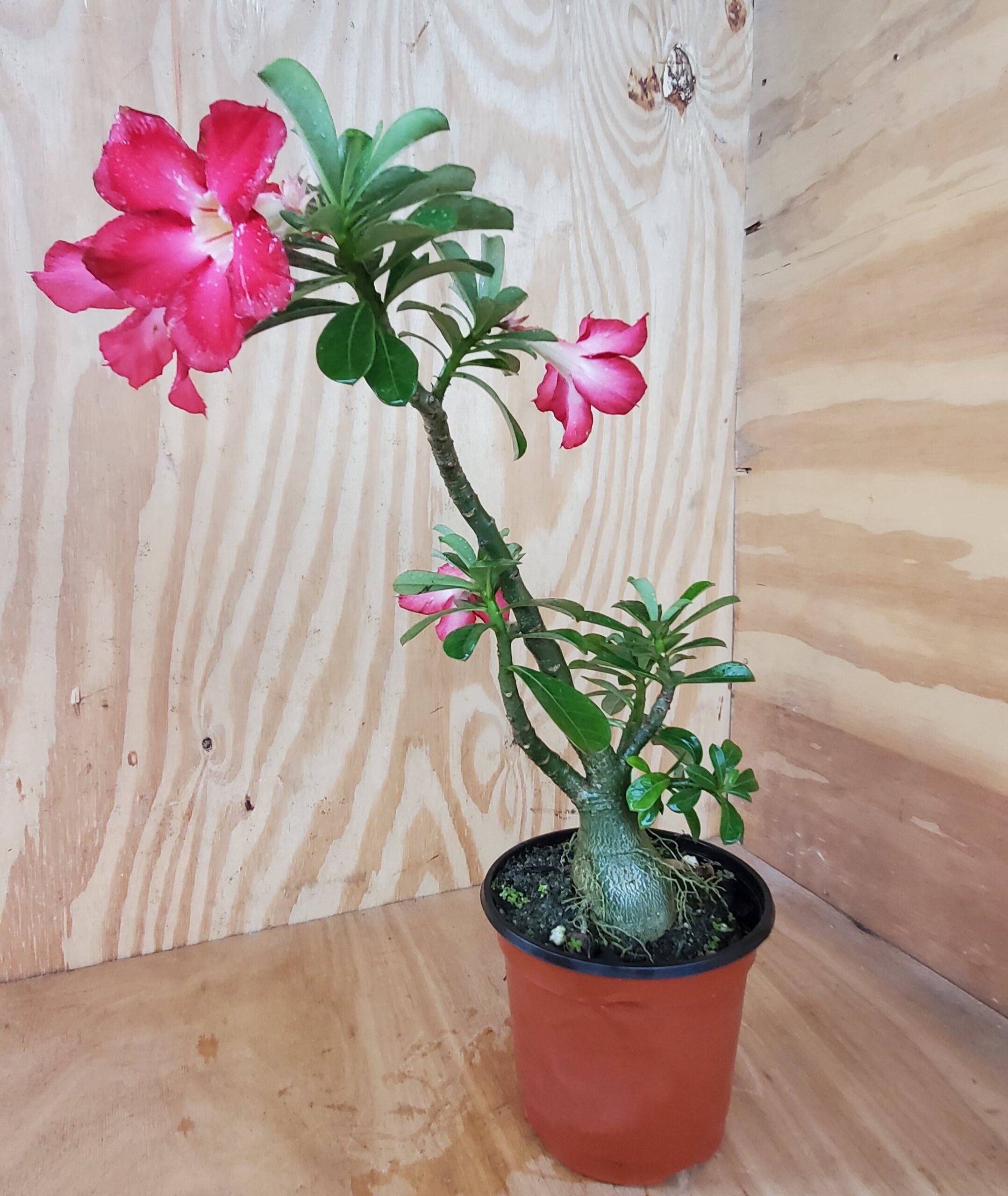

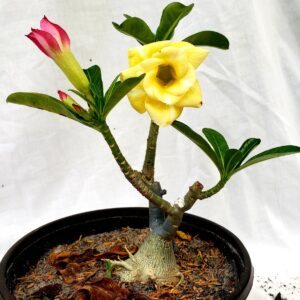
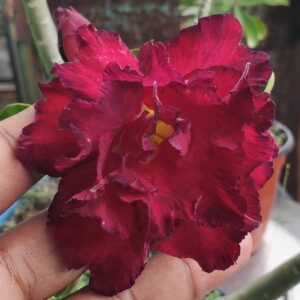
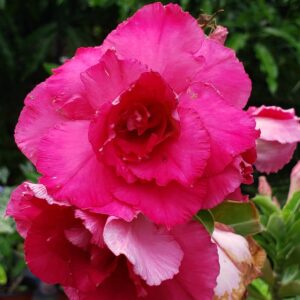
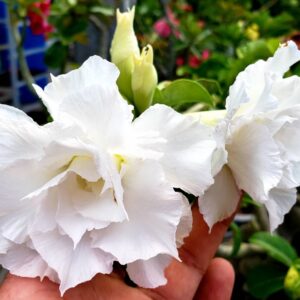
Reviews
There are no reviews yet.